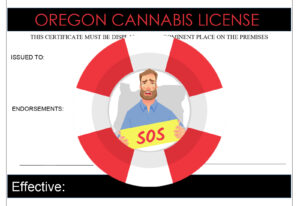It’s been a little while since we’ve talked about patent protection on the blog, but a recent consultation reminded me a primer on the different types of patents potentially available could be beneficial. Here in the United States, there are three broad categories of patents, all of which are governed by the Patent Act (or more formally, Title 35 of the United States Code). I’ll cover each below.
Plant patent
At its base, a plant patent protects a new plant created by a person. It can be granted to anyone who:
invents or discovers and asexually reproduces any distinct and new variety of plant, including cultivated sports, mutants, hybrids, and newly found seedlings, other than a tuber propagated plant or a plant found in an uncultivated state. 35 U.S.C. § 161.
This is the arguably easier patent to obtain (the application only requires a description “as complete as is reasonably possible”), but it offers limited practical protection. In a case for patent infringement, the patent holder would have to show that the defendant asexually reproduced the plant or, without using seeds. Without direct evidence of theft through eyewitness testimony or something similar, proof of infringement can be difficult.
Utility patent
A utility patent covers “any new and useful process, machine, manufacture, or composition of matter, or any new and useful improvement thereof.” 35 U.S.C. § 101. Utility patents offer protection for both sexually and asexually reproduced cannabis plants, as well as other formulations made from that plant. This is why it is the most common type of patent granted – in or around 2016, the USPTO estimated that up to 90% of issued patents were utility patents.
The application process is much more involved – there is a much more thorough written description requirement and a new “enablement requirement” – the plan must enable others “skilled in the art” to make and use the plant. There is also the “markedly different characteristics analysis,” where the applicant has to show that the plant is not simply a natural product – the substance have “markedly different characteristics” from what’s found in nature.
Design patent
A design patent covers “any new, original and ornamental design for an article of manufacture.” 35 U.S.C. § 171. Where a utility patent protects the way something is used and works, a design patent protects the way something looks. This is largely inapplicable to the needs of the industry.
While patent protection has been generally available for some time now, we’ve covered why patent protection has limitations in this post — when dealing with cannabis patents, courts might find that the illegality doctrine requires them to turn away from infringement claims because the patent-holder “would be asking a federal court to protect its illegal enterprise from the unlawful competition posed by another illegal enterprise.”
The good news is that in the first patent infringement case ever filed (which we covered extensively here, here, here, here, and here), there was no mention of the illegality doctrine at all (at least, during its relatively short pendency). Regardless of the shortcomings, we always encourage our clients to protect their intellectual property to the greatest extent possible – if you’re looking for cannabis patent protection, our intellectual property team is ready to help.
























